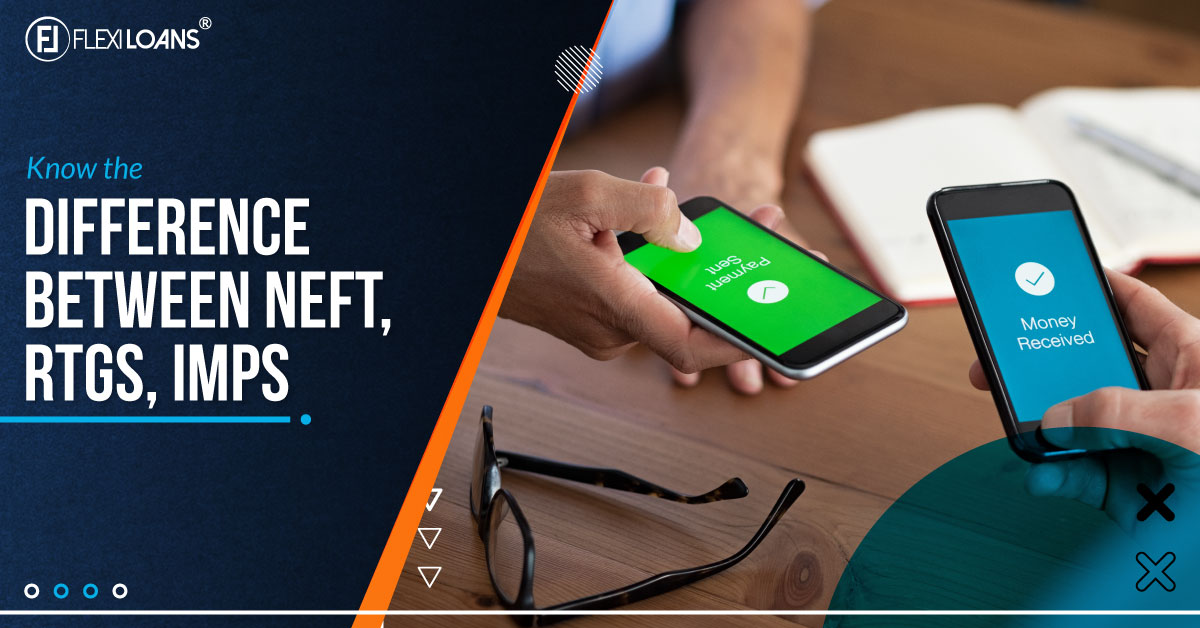Sep 23, 2021

Introduction
In the past, transferring funds from one account to another required a cheque and submission of the cheque to the bank, which typically took one week or longer to process. However, such days are gone, and electronic fund transfer options have gained prominence recently by enabling consumers to transfer money easily via the internet.
With the Electronic Fund Move feature, individuals can effortlessly transfer funds from one bank account to another within the same bank or to another bank account in a fraction of a second. The Government of India’s 2017 Union Budget mandated electronic fund transfers for transactions exceeding Rs. 3 lakhs.
Electronic Transfer of Funds
It is the most convenient method of money transfer since it uses the internet, mobile applications, and banking tools to assist people in safely and securely sending money.
The majority of Indian banks offer users various online money transfer options, including UPI, digital wallets, and more. NEFT, RTGS and IMPS are the most frequently utilized online fund transfer mechanisms. However, it is worth noting that using any of these three payment systems requires the usage of an IFSC Code.
The IFSC, or Indian Financial System Number, is a unique 11-digit alphanumeric code that identifies all banks and their respective branches participating in the online money transfer procedure. The Reserve Bank of India (RBI) assigns the IFSC Code to each bank branch to track internet money transfers. Additionally, users can search for bank addresses using their IFSC Code and conduct hassle-free financial transfers from one bank account to another.
There are several types of electronic funds transfers, including the following:
NEFT (National Electronic Funds Transfer)
NEFT is a nationwide payment method backed by the Reserve Bank of India that permits interbank payments and cash transfers. In December 2019, RBI announced a new NEFT payment mechanism. It states that transactions can be carried out on any day of the year, including holidays.
In January 2020, the RBI ruled it illegal for banks to impose fees for NEFT transactions made through a savings account. Under two hours, you can use NEFT to pay EMIs, credit card bills, and any other fund transfers. As there is no minimum NEFT limit but for maximum is Rs. 10 Lakhs. Even when a bank/NBFC approves any business loan, they transfer the funds via NEFT.
How to send money with NEFT Net Banking?
- Log in to your Net Banking account and enter the recipient’s beneficiary information under ‘Add New Payee’ (Name, Account Number, Account Type and IFSC code)
- Select NEFT as the chosen way of payment.
- Enter the amount and click “Continue.”
RTGS (Real Time Gross Settlement)
RTGS stands for Real-Time Gross Settlement. As the name implies, this approach enables individuals to transfer funds between bank accounts or between accounts within the same bank in real-time or on a gross basis. The Reserve Bank of India maintains the RTGS payment gateway, which facilitates electronic transactions between banks. The transferred amount is immediately debited from the sending bank’s account and credited to the receiving bank’s account. Numerous businesses and corporate organizations utilize RTGS to quickly transfer huge sums of money from one bank account to another.
How to send money with RTGS Net Banking?
- Log in to your Net Banking account and enter the recipient’s beneficiary information (Name, Account Number, Account Type and IFSC code)
- Select RTGS as the preferred mode.
- Enter the amount and click “Continue.”
IMPS (Immediate Payment Service)
IMPS full form in banking is Immediate Payment Service. As the name implies, this approach enables consumers to transfer money instantly from one account to another. Immediate Payment Service was launched by the National Payments Corporation of India (NPCI). It is a real-time electronic payment system that makes use of mobile internet applications. IMPS limit is minimum Re. 1 to maximum Rs. 2 Lakhs. Even when you apply for an unsecured business loan and once the funds are credited, you can transfer them via IMPS for small purchases.
How to make an IMPS Net Banking transfer?
- Register for the Bank’s Mobile Banking Service and Produce MMID and MPIN (the beneficiary would also have the MMID and MPIN).
- Three methods of financial transfer are available:
- Utilization of the Beneficiary’s Mobile Number and MMID
- Utilization of the Beneficiary Account Number and the IFSC Code
- Utilization of the Beneficiary’s Aadhaar Number
- After enrolling and acquiring the necessary information, access Net Banking.
- Select IMPS as the preferred mode.
- Complete the fields below – Beneficiary Mobile Number, MMID, Transfer Amount and Sender MPIN.
- A message of confirmation would be received.
Note: It should be highlighted that the Reserve Bank of India (RBI) launched the NEFT and RTGS payment systems, whereas the National Payments Corporation of India (NPCI) launched the IMPS payment system (National Payments Corporation of India). While all online fund transfer systems seem quick and convenient, they are also necessary for accounting and paperwork.
Difference between IMPS and NEFT
Some characteristics must be examined before a user can conduct an online fund transfer via any electronic payment platform. To use the online fund transfer system, the person responsible must give the beneficiary’s basic bank information, such as the beneficiary’s account number, name, and the IFSC code of the branch whereby the money is to be sent.
When significant parameters such as transaction value, transaction speed, transaction fees, and service availability are considered, each online payment tends to meet unique consumer requirements. The following section discusses the fundamental distinctions between NEFT and IMPS transfer offers. While each has its own set of pros and downsides, they all provide customers with ease and flexibility.
NEFT vs RTGS vs IMPS
| Comparison | NEFT | RTGS | IMPS |
| Process | It is based on Deferred Net Settlement (DNS), and funds are sent in 48 half-hourly increments between 12:30 am and 12:00 am. | The payment process in which funds are credited in real time and on a gross basis to the beneficiary’s bank branch. | IMPS is a real-time and instant interbank fund transfer mechanism widely regarded as a secure and expedient mode of fund transmission. |
| Minimum Transfer Limit | Re. 1 | Rs. 2 Lakhs | Re. 1 |
| Maximum Transfer Limit | No Limit | No Limit | Rs. 2 Lakhs |
| Timings | Available 24×7, 365 days (including bank holidays) | Available 24×7, 365 days (including bank holidays) | Available 24×7, 365 days (including bank holidays) |
| Payment Options | Online and Offline | Online and Offline | Online |
| Transaction Charges | No Charges | No Charges | Decided by individual banks |
| Refund Process | If a NEFT transaction is unsuccessful or does not complete successfully, the destination banks revert to the original transaction and return the funds to the originating branch. It should be completed within two hours of the batch in which the transaction was included. | If an RTGS transaction fails, the funds are paid back to the matching sender’s account as soon as the remitting bank receives them. Typically, money is refunded back to the originating bank account within one hour of the transaction or before the conclusion of the RTGS business day, whichever occurs first. | If an IMPS transaction is unsuccessful, the destination banks revert to the original transaction and return the funds to the originating branch. It should complete in a few seconds or a maximum of 2 hours of the batch in which the transaction was included. |
Significant Differences Between NEFT, IMPS and RTGS
Some critical variables differentiate the various online fund transfer processes. Users can transfer funds easily through these services without waiting in huge queues at the bank to execute financial transactions.
- The Fund’s Value: The originator must select the appropriate payment service based on the number of funds to be transmitted. Similarly, the RTGS payment service is preferred for large-value transactions.
- Limit on Fund Transfers: Each payment method has a separate maximum and lowest amount of money allowed for transfer. As such, this is a critical issue to consider while selecting the optimal mode of transfer.
- Availability of Services: The NEFT, IMPS and RTGS services are available 24 hours a day, 365 days a year (including bank holidays).
- Transactional Rapidity: While NEFT settles funds in 48 half-hourly batches, RTGS and IMPS transactions occur in real-time and are typically completed within minutes.
- Charges for Services: The expenses associated with the fund transfer process vary according to the three types of transfer. RTGS is more expensive than NEFT and IMPS.
Conclusion
We all realize the value of digitization in today’s environment. Whether it’s making hotel reservations, purchasing movie, airline or train tickets, or making large payments for business-related transactions, we require a digital means of cash transfer that solves our online transfer concerns and is safe and secure.
IMPS, NEFT and RTGS are all critical and play a critical role in business and daily life. It eliminates the old-fashioned problem of leaving wallets at home and subsequently being unable to make payments.
Additionally, this banking services trio acts as a saviour. While employing this trio is highly effective, one must constantly remember that they have their set of underlying issues. Therefore, keep those requirements in mind while using NEFT, RTGS, and IMPS services.







